▼ Project 75: The Mother of all Underwater Defence Deals [07-24-17]
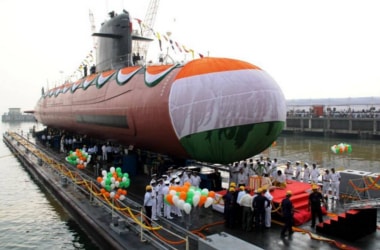 India has finally kick-started its “mother of all underwater defence deals” after an excruciating 10-year delay. India has finally kick-started its “mother of all underwater defence deals” after an excruciating 10-year delay.
France, Germany, Russia, Sweden, Spain and Japan were in the fray to build six advanced stealth submarines for an estimated INR 70,000 crore ($10.9 billion) in collaboration with an Indian shipyard.
This conventional submarine programme called Project-75, languishing in politico-bureaucratic apathy, files and committees since it got the government’s “acceptance of necessity” way back in November 2007, is likely to be the first mega project.
This is under the new “strategic partnership” policy finalized by the defence ministry in May.
The six shipbuilders, Naval Group-DCNS (France), ThyssenKrupp Marine Systems (Germany), Rosoboronexport Rubin Design Bureau (Russia), Navantia (Spain), Saab (Sweden) and the Mitsubishi-Kawasaki Heavy Industries combine (Japan), have to first respond to the RFI (request for information) issued to them soon.
The Navy will then formulate the NSQRs (naval staff qualitative requirements) before the formal RFP (request for proposal) is issued to the six for submitting their technical and commercial bids for evaluation.
The Indian shipyard for the strategic partnership with the selected foreign collaborator will be chosen in a parallel process.
It may take around two years for the original equipment manufacturer (OEM)-Indian shipyard combine to be down-selected.
Moreover, the first new submarine will roll out only seven to eight years after the final contract is inked. But the aim is to fast-track the entire process.
The Navy wants the six new diesel-electric submarines to have land-attack cruise missiles, air-independent propulsion for greater underwater endurance and the capability to integrate indigenous weapons and sensors as and when they are developed.
The stress will be on transfer of technology from the OEM and indigenisation. The submarines, to be built with indigenous steel, should also be less maintenance-intensive to ensure a better operational cycle with minimal downtime.
Navy should have 18 diesel-electric submarines as well as six nuclear-powered attack submarines (called SSNs) and four nuclear-powered submarines with long-range nuclear-tipped missiles (SSBNs) for effective deterrence against China and Pakistan.
But the force is grappling with just 13 old conventional submarines.
Only half of them are operational at any given time because at least 10 of them are over 25 years old, apart from two nuclear-powered submarines, INS Arihant (SSBN) and INS Chakra (SSN).
The six French Scorpene diesel-electric submarines being built in Mazagon Docks under the INR 23,652 crore Project-75, after an over four-year delay, will all be delivered by 2021.
But by then, many of the 13 existing submarines will be up for retirement despite mid-life upgrades and refits
|
▼ US issues sanctions against Iran [07-20-17]
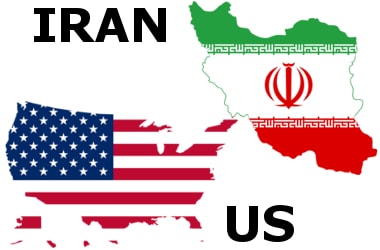 The Trump administration on 18th July 2017 unveiled new economic sanctions against Iran over its ballistic missile program and for contributing to regional tensions. The Trump administration on 18th July 2017 unveiled new economic sanctions against Iran over its ballistic missile program and for contributing to regional tensions.
This comes one day after warning Tehran that it was not following the spirit of its nuclear agreement with world powers.
The US Department of Treasury, in a statement, said it was targeting 16 entities and individuals for supporting what is said was “illicit Iranian actors or transnational criminal activity.”
Those sanctioned had backed Iran’s military or Iran’s Islamic Revolutionary Guard Corps (IRGC) by developing drones and military equipment, producing and maintaining boats, and procuring electronic components, the U.S. said.
Others have also ‘orchestrated the theft of US and Western software programs’ sold to Iran’s government, the Treasury Department said.
The US State Department had also designated two Iranian organizations involved in Iran’s ballistic missile program, according to the Treasury Department.
2015 Nuclear Deal: Know More
- The 2015 Nuclear Deal was a preliminary framework agreement signed between Iran and P5+1 countries (United States, United Kingdom, Russia, France, China- plus Germany) and the European Union in July 2015.
- The deal is also called as Joint Comprehensive Plan of Action (JCPA) or Vienna agreement.
- The deal aims to stop Iran from acquiring a nuclear weapon in return for lifting international oil and financial sanctions.
- Under it, Iran has agreed to give up its most advanced centrifuges and use only its oldest models.
- But it still allows Iran to continue enrichment in lower quantities for civilian purposes such as power plants. As part of the deal Iran has agreed to reduce its stockpile of uranium by 98%.
- Under this deal, Iran could keep 300 kg enriched uranium for the next 15 years and it will get rid of extra uranium by shipping it to Russia.
|
▼ Union Cabinet approves India-BRICS MOC [07-20-17]
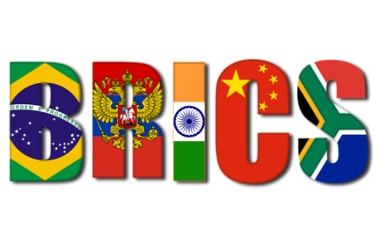 The Union Cabinet chaired by the Prime Minister Shri Narendra Modi has given the approval for the signing of Memorandum of Cooperation (MOC) in respect of tax matters between India and the Revenue administrations of BRICS countries. The Union Cabinet chaired by the Prime Minister Shri Narendra Modi has given the approval for the signing of Memorandum of Cooperation (MOC) in respect of tax matters between India and the Revenue administrations of BRICS countries.
The BRICS countries are Brazil, Russian Federation, China and South Africa
The MoC aims to further promote cooperation amongst the BRICS Revenue administrations in international forum on common areas of interest in tax matters and in the area of capacity building and knowledge sharing.
It envisages regular interaction amongst the heads of Revenue administration of BRICS countries to continue discussion on common areas of interest and strive towards convergence of views and meeting of the Experts on tax matters to discuss the contemporary issues in areas of international tax.
In addition, the MoC accords confidentiality and protection to information exchanged under this MoC.
The MoC will stimulate effective cooperation in tax matters.
The collective stand of BRICS countries can prove to be beneficial not only to these countries but also to other developing countries in the long run in tax matters being steered by the G20.
Need for MOC
- The Heads of Revenue of the BRICS countries have been meeting regularly to discuss the potential areas of cooperation in tax matters and to exchange opinions.
- They also discuss views based on the existing commitment to openness, solidarity, equality, mutual understanding, inclusiveness and mutually beneficial cooperation, as stated in the Goa Declaration issued on October 16, 2016.
- The BRICS countries have identified four areas of mutual interest on which understanding and cooperation can be further strengthened.
- The heads of Revenue of BRICS countries in their meeting held on the sidelines of FTA plenary at Beijing, China in May, 2016 decided to sign a MoC outlining these areas of cooperation.
|
▼ Following Nepal, India to now develop Sri Lankan village [07-19-17]
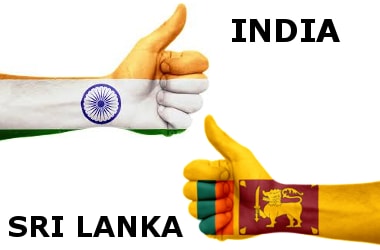 India and Sri Lanka signed a MoU to develop Most Ven Maduluwawe Sobitha Thero Village (Elapathagama) in Anuradhapura District on July 14, 2017. India and Sri Lanka signed a MoU to develop Most Ven Maduluwawe Sobitha Thero Village (Elapathagama) in Anuradhapura District on July 14, 2017.
The village will be developed using a grant of INR 300 million from the Government of India.
The project envisages construction of 153 new houses, a multipurpose community building and alms hall, internal water supply system and renovation of Monk’s Quarters & library.
This project is in line with Government of Sri Lanka’s policy of rehabilitation of rural villages for economic development. It will benefit 153 families residing in the village.
Sri Lanka: Know More
- Capitals: Colombo, Sri Jayawardenepura Kotte
- Currency: Sri Lankan rupee
- President: Maithripala Sirisena
- Destinations: Kandy, Colombo, Dambulla, Polonnaruwa
- Official languages: Sinhala, Tamil, English
|
▼ India and EU establish Investment Facilitation Mechanism [07-17-17]
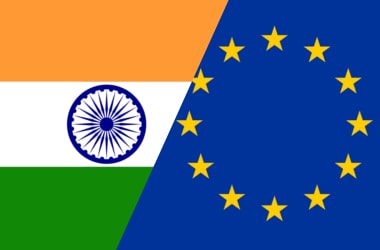 India and European Union (EU) have established Investment Facilitation Mechanism (IFM) for EU Investments in India. India and European Union (EU) have established Investment Facilitation Mechanism (IFM) for EU Investments in India.
The mechanism will allow for a close coordination between EU and India with an aim to promote and facilitate EU investment in India.
Ease of doing business is a fundamental priority of the Indian Government’s Make in India Campaign and the establishment of IFM for facilitating EU investments in India is another step to achieve this goal.
The IFM builds on the Joint Statement of the 13th EU-India Summit held in Brussels in March 2016, where the EU had welcomed India's readiness to establish such a mechanism and leaders from both sides had reaffirmed their shared commitment to oppose protectionism and to work in favour of a fair, transparent and rule-based trade and investment environment.
As part of the IFM, the EU Delegation to India and the DIPP will hold regular high level meetings to assess and facilitate “ease of doing business” for EU investors in India.
This will include identifying and putting in place solutions to procedural impediments faced by EU companies and investors in establishing or running their operations in India. Invest India, the Indian government's official Investment Promotion and Facilitation Agency, will also be part of the IFM.
It will create a single-window entry point for EU companies that need assistance for their investments at the central or state level.
The DIPP will also facilitate participation of other relevant ministries and authorities on a case-to-case basis.
The EU is the largest foreign investor in India and this initiative helps ensuring a more robust, effective and predictable business environment for the EU investors."
Trade and Investment are key elements of the EU-India Strategic Partnership launched in 2004.
Along with being the first trade partner in goods and services, EU is one of the biggest provider of foreign investment in India, with a stock exceeding $81.52 billion (more than Rs 4.4 lakh crores) as of March 2017, the statement said.
There are currently more than 6,000 EU companies present in India, providing direct and indirect employment to over 6 million people.
|
▼ JIN Agreement between India, Bangladesh to protect investments [07-13-17]
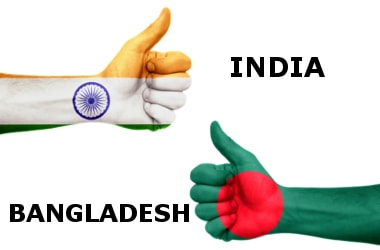 The Union Cabinet has given its approval for the Joint Interpretative Notes (JIN) on the Agreement between India and Bangladesh for the Promotion and Protection of Investments. The Union Cabinet has given its approval for the Joint Interpretative Notes (JIN) on the Agreement between India and Bangladesh for the Promotion and Protection of Investments.
Decision in this regard was taken at the Union Cabinet meeting chaired by Prime Minister Narendra Modi in New Delhi.
JIN plays an important supplementary role in strengthening the investment treaty regime.
Looking at increasing trend in Bilateral Investment Treaty (BIT) disputes, issuance of such statements is likely to have strong persuasive value for resolving disputes before arbitration tribunals.
Moreover, such pro-active approach by states also can foster more predictable and coherent reading of treaty terms by tribunals.
The approval JIN by the Union Cabinet will impart clarity to the interpretation of the existing agreements between India and Bangladesh for the Promotion and Protection of Investments (BIPA).
The JIN between India and Bangladesh includes interpretative notes to be jointly adopted for many clauses.
This is including, the definition of investor, investment, exclusion of taxation measures, National Treatment (NT), Fair and Equitable Treatment (FET) and Most Favoured Nation (MFN) treatment, essential security interests, expropriation and Settlement of Disputes between an Investor and Contracting Party.
|
▼ MALABAR-17 war exercise to be held in Bay of Bengal [07-11-17]
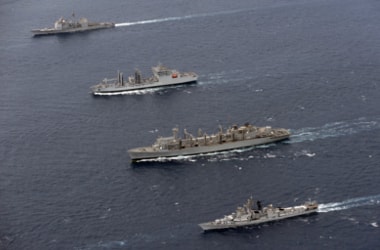 Naval co-operation between India, US and Japan epitomises the strong and resilient relationship between the three democracies. Naval co-operation between India, US and Japan epitomises the strong and resilient relationship between the three democracies.
The MALABAR series of exercises, initiated in 1992 between the Indian and US Navies, have steadily grown in scope, complexity and participation into a multifaceted exercise.
This is with the participation of Japanese Maritime Self Defense Force (JMSDF).
The 21st edition of the exercise, MALABAR-17 will be conducted in the Bay of Bengal from 10 to 17 July 2017.
The primary aim of this exercise is to increase interoperability amongst the three navies as well as develop common understanding and procedures for maritime security operations.
The scope of MALABAR-17 includes wide-ranging professional interactions during the Harbour Phase at Chennai from 10 to 13 July 2017.
It also includes diverse range of operational activities at sea during the Sea Phase from 14 to 17 July 17.
The thrust of exercises at sea this year would be on Aircraft Carrier operations, Air Defence, Anti-Submarine Warfare (ASW), Surface Warfare, Visit Board Search and Seizure (VBSS), Search and Rescue, Joint Manoeuvres and Tactical procedures.
In addition, officials from the three countries will be flown onboard the ships at sea on 15 July 2017.
The Indian Navy will be represented by the aircraft carrier INS Vikramaditya with its air wing, guided missile destroyer Ranvir.
Also part of the line up are indigenous stealth frigates Shivalik and Sahyadri, indigenous ASW corvette Kamorta, missile corvettes Kora and Kirpan.
Included in the exercise will be one Sindhughosh class submarine, fleet tanker INS Jyoti and Long Range Maritime Patrol Aircraft P8I.
The US Navy will be represented by the ships from the Nimitz Carrier Strike Group and other units from the US 7th Fleet.The US Navy forces will include the Nimitz-class aircraft carrier Nimitz with its air wing, Ticonderoga-class cruiser Princeton, Arleigh Burke-class destroyers Kidd, Howard and Shoup along with integral helicopters.
Also included are a Los Angeles-class attack submarine and one Long Range Maritime Patrol Aircraft P8A.
The exercise will also witness a separate interaction between IN and USN Special Forces and Explosive Ordnance Disposal teams at the IN MARCOS training base INS Karna at Visakhapatnam.
The JMSDF will be represented by JS Izumo, a helicopter carrier with SH 60K helicopters and JS Sazanami, a missile destroyer with SH 60K integral helicopter.
MALABAR-17: Know More
- MALABAR-17 will be another milestone with participation of 16 ships, two submarines and more than 95 aircraft.
- It aims towards strengthening mutual confidence and inter-operability as well as sharing of best practices between the Indian, Japanese and US Navies.
- The exercise is a demonstration of the joint commitment of all three nations to address common maritime challenges across the spectrum of operations.
- It will go a long way in enhancing maritime security in the Indo-Pacific region, for the benefit of the global maritime community.
|
▼ Bridge over Karnaphuli river to facilitate Indo-Bangla trade [07-10-17]
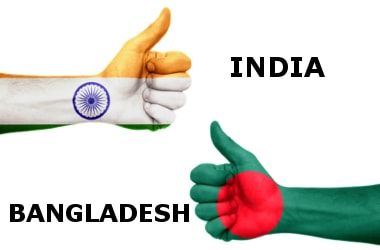 India and Bangladesh have decided to construct bridge over Mizoram’s Khawthlangtuipui river to facilitate trade and improve communication between the two neighbours. India and Bangladesh have decided to construct bridge over Mizoram’s Khawthlangtuipui river to facilitate trade and improve communication between the two neighbours.
Officials of India and Bangladesh held a meeting on 7th July at Tlabung town (Mamit district) and discussed to speed up the works for the proposed construct bridge between the two countries across Khawthlangtuipui river (also known as Karnaphuli river).
The proposed bridge would be an important linkage between India and Bangladesh. The Bangladesh government has taken a number of steps to make it a reality.
Bangladesh Prime Minister Sheikh Hasina had given approval to construct the bridge and linking roads.
The Mamit district is adjacent to Khagrachari district of Chittagong hill tracts of southeast Bangladesh.
The bridge would not only improve road connectivity between the two regions but also strengthen the ties between the people of the two countries living both sides of the borders.
It has been proposed that the location of the bridge be made as closer as possible to the nearest land custom station in the Bangladesh side.
After the meeting, officials of the two countries inspected possible locations to construct the bridge.
Mizoram shares a 318 km unfenced border with Bangladesh.
Mizoram: Know More
- Mizoram is one of the states of Northeast India, with Aizawl as its capital city.
- The name is derived from Mi, Zo and Ram.
- Mizoram implies "land of the hill people". Wikipedia
- Capital: Aizawl
- Population: 1.116 million (2014)
- Districts: 8
- Formation: 20 February 1987
|
▼ PM Modi's gifts to Israel PM: Know More! [07-7-17]
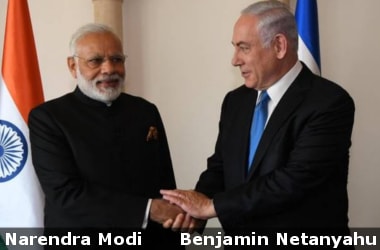 Prime Minister Narendra Modi presented Prime Minister of Israel Mr. Benjamin Netanyahu replicas of 2 sets of relics from Kerala that are regarded as key artefacts in the long Jewish history in India. Prime Minister Narendra Modi presented Prime Minister of Israel Mr. Benjamin Netanyahu replicas of 2 sets of relics from Kerala that are regarded as key artefacts in the long Jewish history in India.
They comprise two different sets of copper plates that are believed to have been inscribed in 9-10th century C.E.
The first set of copper plates is a cherished relic for the Cochini Jews in India.
It is regarded as a charter describing the grant of hereditary royal privileges and prerogatives by the Hindu King, Cheraman Perumal (often identified as Bhaskara Ravi Varma) to the Jewish leader Joseph Rabban.
According to traditional Jewish accounts, Joseph Rabban was later crowned as the Prince of Shingli, a place in or equated with Cranganore.
Cranganore is where Jews enjoyed religious and cultural autonomy for centuries, before they moved to Cochin and other places in Malabar.
Local Jews once placed in each coffin a handful of earth from Shingli/Cranganore that was remembered as a holy place & a “second Jerusalem”.
The replica of these plates was made possible with the cooperation of the Paradesi Synagogue in Mattancherry, Kochi.
The second set of copper plates is believed to be the earliest documentation of the history of Jewish trade with India.
These plates describe the grant of land and tax privileges by the local Hindu ruler to a church and oversight of trade in Kollam to West Asian and Indian trading associations.
West Asian association included Muslims, Christians, Zoroastrians, as also a group of Jews who signed in Judeo-Persian and possibly also in Arabic and Pahlavi (Middle Persian).
The plates bear their signatures that appear to have been cut into the plates by a local workman unfamiliar with the script.
The replica of these plates was made possible with the cooperation of Malankara Mar Thoma Syrian Church in Thiruvalla, Kerala.
In addition, Prime Minister also presented PM Netanyahu a Torah scroll donated by the Paradesi Jewish community in Kerala.
Handwritten over a hundred years ago, the scroll had been dedicated to the Paradesi Synagogue in Kochi that had been built in 1568.
The Torah is enclosed on wooden staves in a wooden case adorned with silver sheets and a metal crown covered in gold sheets in floral ornament style, bearing motifs typical of lamps and decorations of south India.
|
▼ Some prominent takeaways from Modi’s visit to Israel! [07-7-17]
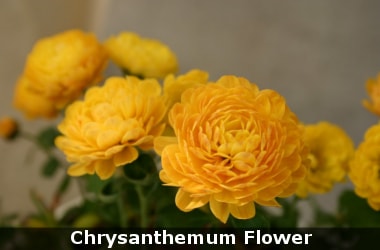 Prime Minister Narendra Modi’s three-day visit to Israel which is the first by an Indian prime minister to Israel resulted in the signing of seven agreements on areas including space, tech and agriculture. Prime Minister Narendra Modi’s three-day visit to Israel which is the first by an Indian prime minister to Israel resulted in the signing of seven agreements on areas including space, tech and agriculture.
The other prominent takeaways of the visit are the following
OCI card: Prime Minister Modi has assured faster facilitation of OCI cards for Jewish Citizens of Indian origin in Israel. He also assured that the OCI card will be given even to those people of Indian origin who had served in the Israeli government’s compulsory army service.
Air Connectivity: The launch of a new Air India flight connecting India and Israel was announced, the flight is expected to connect Delhi/Mumbai with Tel Aviv.
Israeli flower named after PM Modi: As a special gesture, a new fast growing Israeli Chrysanthemun flower was named “MODI” after Prime Minister Narendra Modi, during the Indian Premier’s visit to the Danziger flower farm,
As far as strategic partnership goes, India and Israel have announced that they have elevated their ties to a strategic partnership as India has identified Israel as a major development and technological partner.
Both countries have also agreed to combat growing radicalisation and terrorism and expand co-operation in cyber security.
Prime Minister Narendra Modi has announced the establishment of an Indian Cultural Centre in Israel to enhance people-to-people contacts between the two countries.
Israel’s has also voiced its strong support to promote the practice of yoga by designating June 21 as International Yoga Day.
Israel India Innovation Initiative Fund (I4F) The $40 million Israel India Innovation Initiative Fund has been launched as a five-year technology fund with an aim at growing the business relationship between both the countries.
The similar type of fund had boosted Israel’s ties with that of the US in the past 40 years.
|
▼ 10th India-Jordan Trade and Economic Joint Committee diversifies bilateral trade [07-7-17]
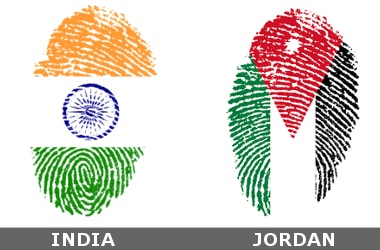 The 10TH India-Jordan Trade and Economic Joint Committee (TEJC) Meeting was held in New Delhi on 4th and 5th July, 2017. The 10TH India-Jordan Trade and Economic Joint Committee (TEJC) Meeting was held in New Delhi on 4th and 5th July, 2017.
It was under the co-chairs of Smt. Nirmala Sitharaman, Minister of State (Independent Charge) for Commerce and Industry, Government of India, and H.E Eng. Mr. Yarub Qudah, Minister of Industry, Trade and Supply, the Government of the Hashemite Kingdom of Jordan.
On this occasion, the two countries emphasized the need for diversification of bilateral trade and deepening their engagements for greater cooperation in investment sector.
During the TEJC meeting, the two sides also reaffirmed their mutual interest and discussed the roadmap for cooperation in various fields such as Fertilizer Sector, Customs, Double Taxation Avoidance Agreement, Visa and Consular issues, etc.
The two leaders also inked the revised Economic and Trade Cooperation Agreement between the Government of the Republic of India, and the Government of the Hashemite Kingdom of Jordan, aiming at boosting and diversifying bilateral trade relations.
It also aims to promote economic, trade and investment cooperation based on the principle of equity, non-discrimination.
On the sidelines of the TEJC, business federations from both sides also met and discussed the roadmap for promotion of trade and investment through B2B mechanism.
|
▼ Modi first Indian PM to visit Israel, India signs 7 agreements [07-6-17]
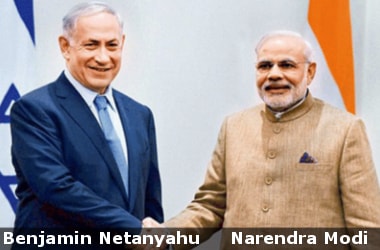 India and Israel have signed 7 agreements on areas including space, tech and agriculture during the visit of Prime Minister Narendra Modi to Israel. India and Israel have signed 7 agreements on areas including space, tech and agriculture during the visit of Prime Minister Narendra Modi to Israel.
Prime Minister Narendra Modi will be the first Indian Prime Minister to visit Israel.
Also, Prime Minister Narendra Modi’s visit marks the 25 years of establishment of diplomatic relationship between India and Israel.
In the joint statement released after talks between India and Israel, both the countries have called for taking strong measures against terror organisations and also against those who encouraged, supported and financed terrorism.
The MOUs were
- MoU for setting up of India-Israel Industrial R&D & Technological Innovation Fund (I4F)
- MoU for conservation of water in India
- MoU on State Water Utility Reform in India India-Israel Development
- Cooperation- 3-year work program in Agriculture (2018-2020) Plan of cooperation regarding cooperation in atomic clocks
- MoU regarding cooperation in GEO-LEO optical link.
- MoU regarding cooperation in electric propulsion for small satellites.
The diplomatic relationship between India and Israel was established in 1992.
Indo-Israeli Relations
- India is Israel’s topmost destination for arms export.
- India is already buying an average of $1 billion per year in military equipment.
- For India, Israel is the third largest source of arms after the US and Russia with a share of 7.2% between 2012 and 2016.
- The earliest India-Israel defence collaboration took place during the 1962 Sino-Indian war when Israel provided military aid to India.
- Israel also helped India during its two wars with Pakistan in 1965 and 1971.
- India reciprocated by helping Israel during the six-day war in 1967 by supplying spare parts for French-made Mystere and Ouragan aircraft as well as AX-13 tanks.
- In April 2017, India and Israel had signed a $2 billion deal for an advanced medium-range surface-to-air missile system which will be helpful for the Indian army to shoot down aircraft, missiles and drones etc.
- Israel is India’s 38th-biggest trading partner with the trade balance standing in India’s favour in 2016-17.
|